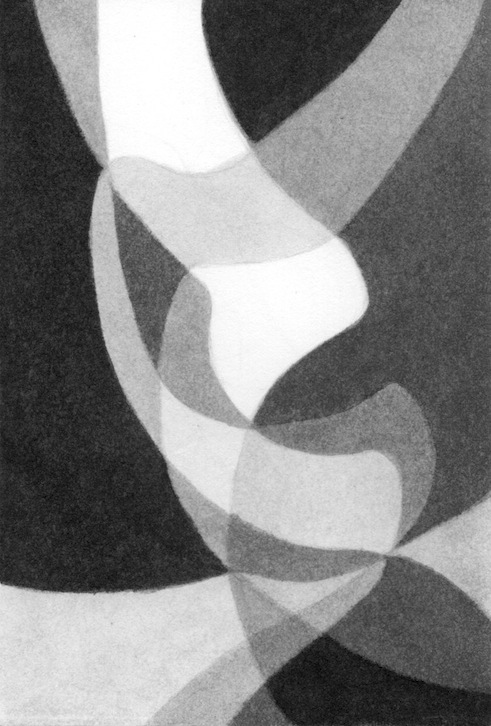The Calendar of The Soul by R. Steiner is a collection of 52 meditative verses, one for each week of the year. Written in poetic form, the verses guide us to experience, perceive and initiate a conscious relationship and participate actively in the rhythms of the year as they unfold from week to week.
A note about my creative Process:
When I set out to create an illustration for a specific verse, I start by reading it a few times to make sure I understand what is being said. I direct my attention to sounds or verbs that are especially prevalent; these affect the form qualities I work towards. Specific spacial gestures, such as “senses heights”, ”depths of soul” etc., also influence the composition. What follows is a relatively chaotic step in the process in which, working with pencil and eraser, I draw lines that weave together the different movements of the verse. Foundational form principals, such as curvy (willing) and straight (thinking), concave (the world impresses itself upon me) and convex (I express myself), are used to create a choreography of soul activities. Concurrently, an inner process with the verse continues as it unfolds and becomes a mood of soul, an inner resonating. Gradually, like water carving itself a path, specific “trails” start to form as others are erased. Increasingly, I attend to developing the interrelations of the drawn lines: Crossing lines create a wakeful quality of heightened activity. In contrast, lines moving in parallel or as an echoing movement bring about a restful quality. Form progressions (small to large, sharp to round etc.) support an experience of the whole composition as the dynamic activity of one being. Now I need to evaluate the lines as meetings of two surfaces. Every line indicates a tonal variation; I start “thinking in surfaces.” I then begin layering ink washes in a process of orientating myself to the light, activating and intensifying it through the presence of darkness, while not losing it altogether. Tonal gradations create a unified breathing of “gravity” and “levity” to guide my feeling. While every verse has a unique orientation to the light within, and without, I also work with the larger movement of light and dark that progresses through the course of the whole year: When the darkness of winter is outside, we light candles and warm ourselves by the fire; in summer we rest in the shade after playing in the sunlight flooded world. This year-long movement of light and dark has its own smaller movements and dynamic fluctuations within it, so it informs, but does not restrict, the composition of each individual piece.
I have recently completed illustrating all 52 verses, but decided to revisit two of the verses before I finalize and publish the series in a book.
Ella Manor Lapointe




















































